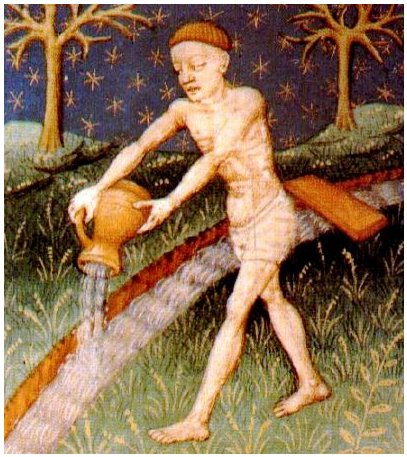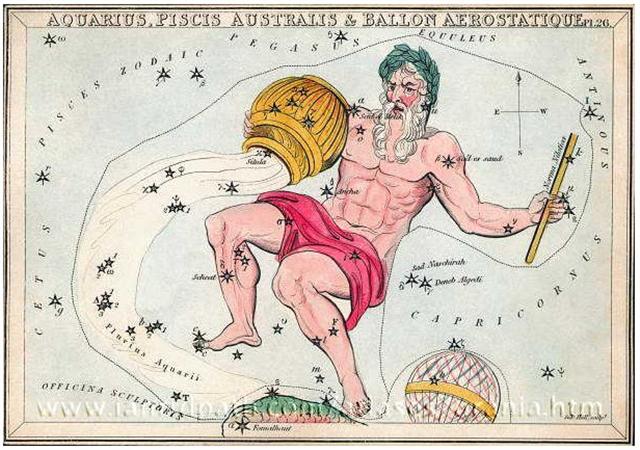6. The Rod can (like a serpent) represent the junction between the old and new years:  At the back side (rising earlier) of this old Aquarius person there is a 'Fallen Rod' connecting one bank of the River to the other. But in the version of Urania's Mirror a trick has been played on us - the k star at the Nilometer is not Situla:
The Greek lettered κ (Situla) is at the rim of the Urn, not at the top of the Nilometer, where instead there is a Latin letter k. The meaning obviously is for the viewer to connect k with κ, to imagine the Rod inserted into the Urn (Tent) at the K position.
There is a watery hole at bottom in Gb2-24 (in the day of Venus). 3 days later a reversal seems to be depicted, with a watery container (hipu) at left. 2-27 is easily translated into the formula for π (= 22 / 7). 80 + 346 = 426 and 426 - 365 = 61, which possibly means 31 (January) + 30 (February). The last 2 days of February would then be hidden from view. ... γ, 4.1, greenish, on the right arm at the inner edge of the Urn, and the westernmost star in the Y, is Sadachbia, from Al Sa'd al Ahbiyah, which has been interpreted the Lucky Star of Hidden Things or Hiding-places, because when it emerged from the sun's rays all hidden worms and reptiles, buried during the preceding cold, creep out of their holes!
There is a week from Sadachbia to τ Aquarii and if the end of February is hidden from view then also other things could be hidden. For instance could the pair Gb2-29--30 be a pointer to the end of side a of the tablet. If so, then we could possibly count backwards from glyph number 230 (Ga8-26) in order to find another π glyph. There we will find the star Al Baldah (π Sagittarii):
Alternatively, counting 3 days backwards from hanau in Gb1-2 (at day 10 * 29½ from equinox) will lead us to Saturn and Ga8-25. In the manzil system day 231 is the end of Qalb al Akraab and 3 days earlier we will find day 364 in the Gregorian calendar:
136 + 228 = 364. |
















